| |
Montreal's Main Attractions
Notre-Dame Basilica (Basilique Notre-Dame de
Montreal)
is a basilica in the historic
area of Montreal.
The church is famous for Gothic Revival architecture, beautiful
interior, stained glass windows, paintings, statues,
altarpiece.
It also has a Casavant Freres pipe organ, which comprises four keyboards,
97 stops, over 9000 individual pipes and a pedal board.
It was notably the first organ with adjustable-combination pedals to be
operated by electricity.
Celine Dion got married at Notre-Dame, it's typically
the site of funerals of significant people such as Pierre Trudeau and Maurice
Richard.
It is a place where classical and choral concerts are
held. |
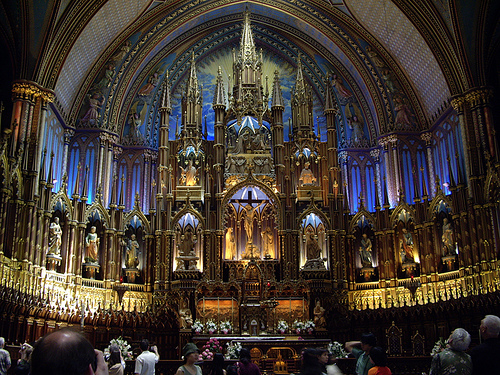 |
|
Mount-Royal
Mount
Royal is a large hill (234 meters) is the highest point in Montreal, located in the middle of the
city and gives most beautiful views of the city of Montreal.
From this point, you can see Montreal's attractions - the Olympic Stadium, the
Jacques-Cartier bridge, the St. Lawrence River and more.
Mount Royal Park (Parc du Mont-Royal) was designed by the landscaper and
architect, Frederick Law Olmsted – best know as the designer of New York City’s Central Park.
Cross on the top of Mount-Royal stands at the northeastern edge of the mountain, overlooking the
east end of Montreal, illuminated cross was installed in 1924 by the Societe
Saint-Jean-Baptiste
|
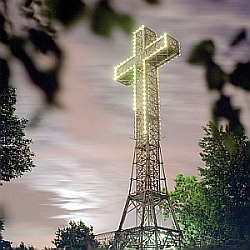 |
Olympic
Park
The Olympic Park was designed for 1976 Summer Olympic Games by Roger
Taillibert.
The stadium Olympic Park Montrealis can seat more than 56,000 people, and is used today for occasional
sports events, major trade shows and concerts.
One of the main attractions at the Olympic Park is the Montreal Tower or the
Olympic Tower.
It is the tallest inclined tower in the world at 175 metres, and is a member of the World Federation of
Great Towers. Enjoy Montreal city views at the top of the tower.
|
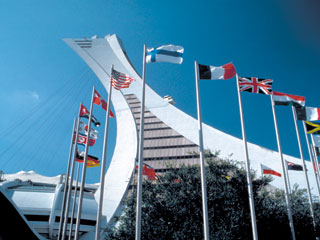 |
The
Underground City
Montreal's Underground
City - officially RESO or La Ville Souterraine - is the set
of interconnected complexes in and around Downtown Montreal, Quebec, Canada.
It is also known as the indoor city (ville interieure), and is
the largest underground complex in the world. The
underground city is promoted as an important tourist attraction by most Montreal travel guidebooks, and
as an urban planning achievement it is impressive. There are
more than 120 exterior access points to the underground city. Each access point is an entry point to
one of 60 residential or commercial complexes comprising 3.6
square kilometres (1.4 sq mi) of floor space, including 80% of all office space and 35% of all
commercial space in downtown Montreal. Because of its
Underground City, Montreal is often referred to as "Two Cities in
One." |
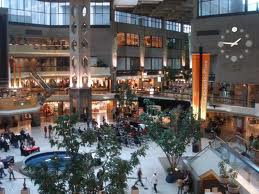
|
The
Montreal Casino
The Casino de Montreal
is a casino located on the Ile Notre-Dame in Montreal, Quebec.
The Montreal Casino is the only casino in the city, located on its own
island minutes from downtown.
It is the largest casino in Canada, and one of the largest casinos in the
world.
The casino is open twenty-four hours a day, seven days a week.
Cards, dice, slot machines, keno, roulette.
There is a race track surrounding the Montreal Casino where the
Montreal Grand Prix takes place every summer. |
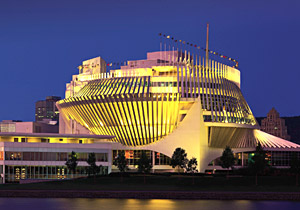 |
Montreal
Biodome (Biodôme de Montreal)
The building was originally constructed for the 1976 Olympic Games as a velodrome and
now allows visitors to walk through replicas of four ecosystems found in the Americas.
* The Tropical Forest is a replica of the South American rainforest.
* The Laurentian Forest is a replica of the North American wilderness.
* The Saint Lawrence Marine Eco-system is an estuary habitat modelled on the Gulf of
Saint Lawrence.
* A polar area that is divided into Arctic and Antarctic.
Biodome is a combination of a zoo, an aquarium, a botanical garden and so much more. |
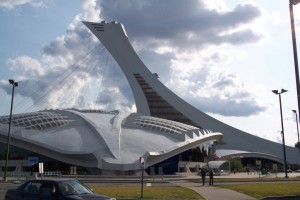 |
|
|
|